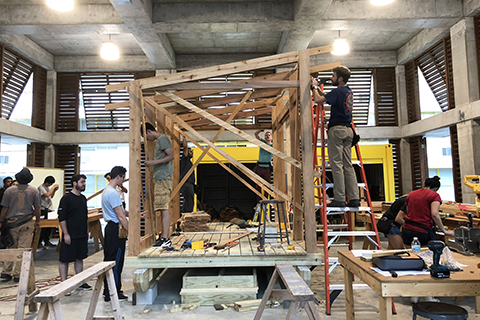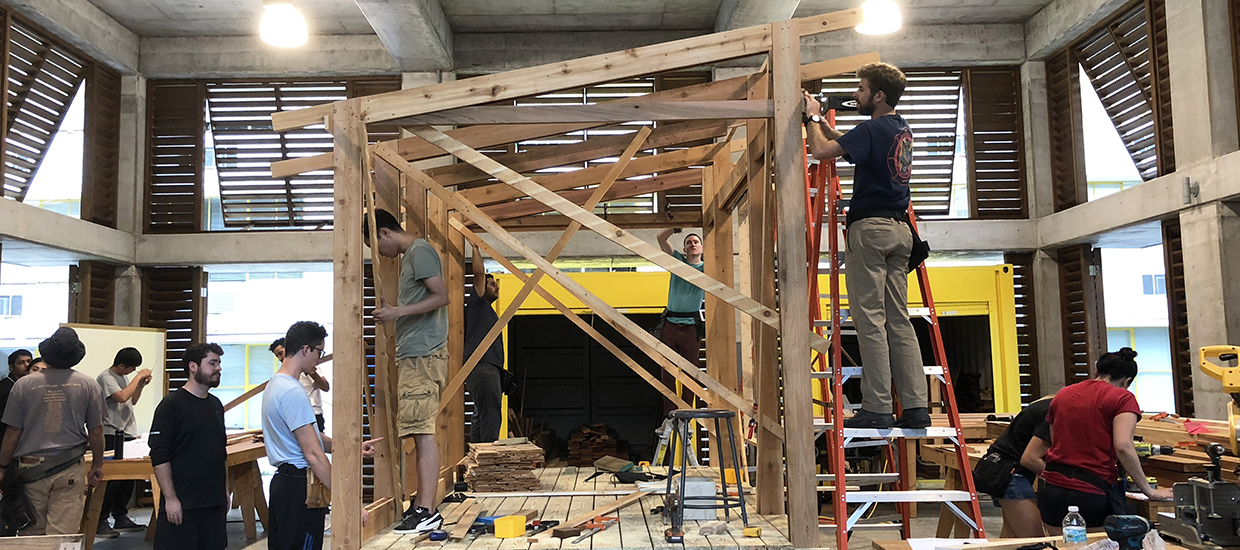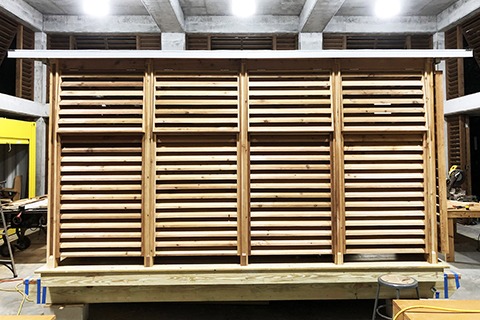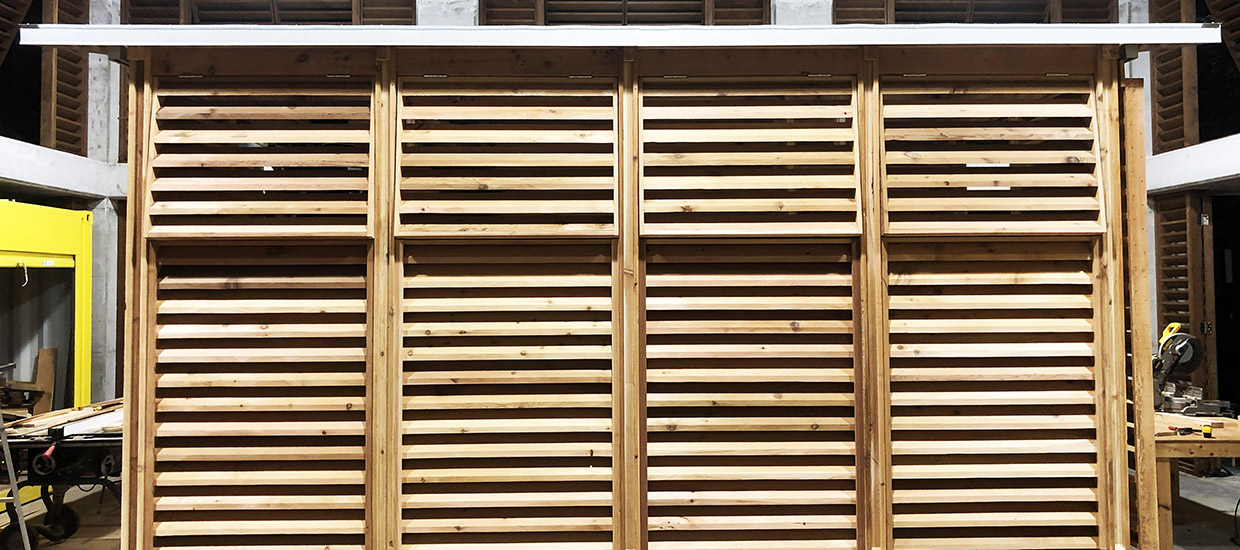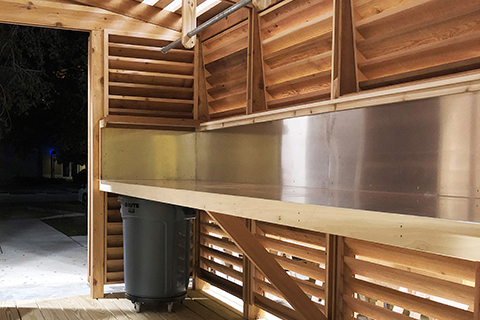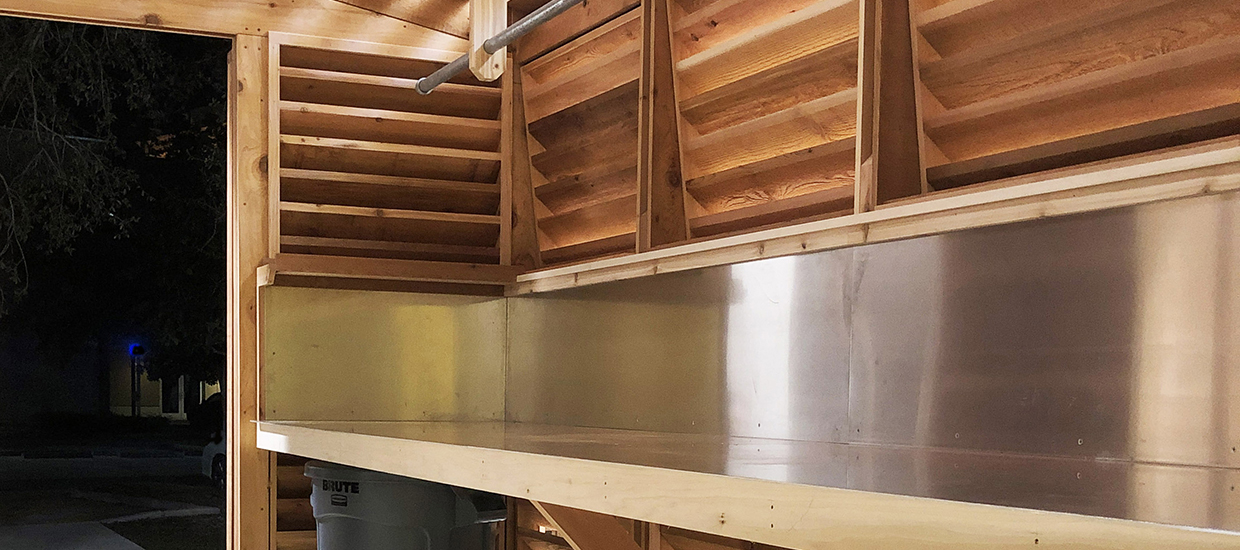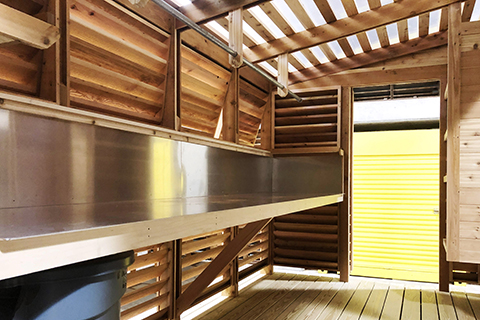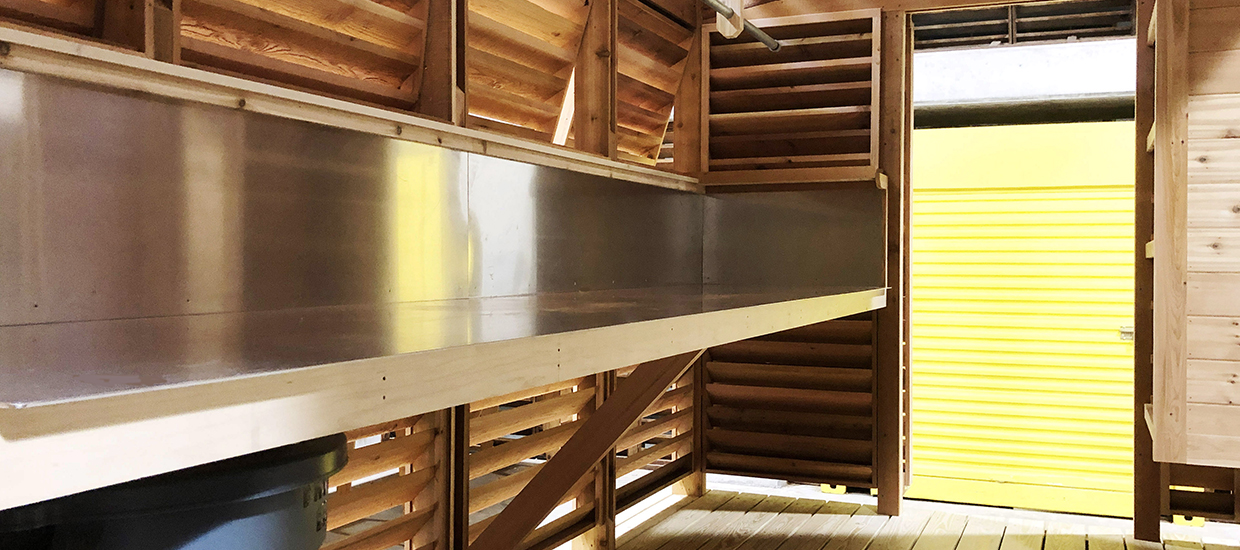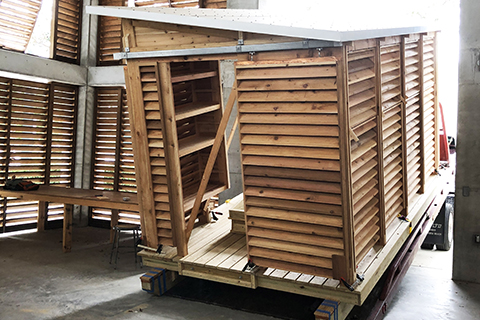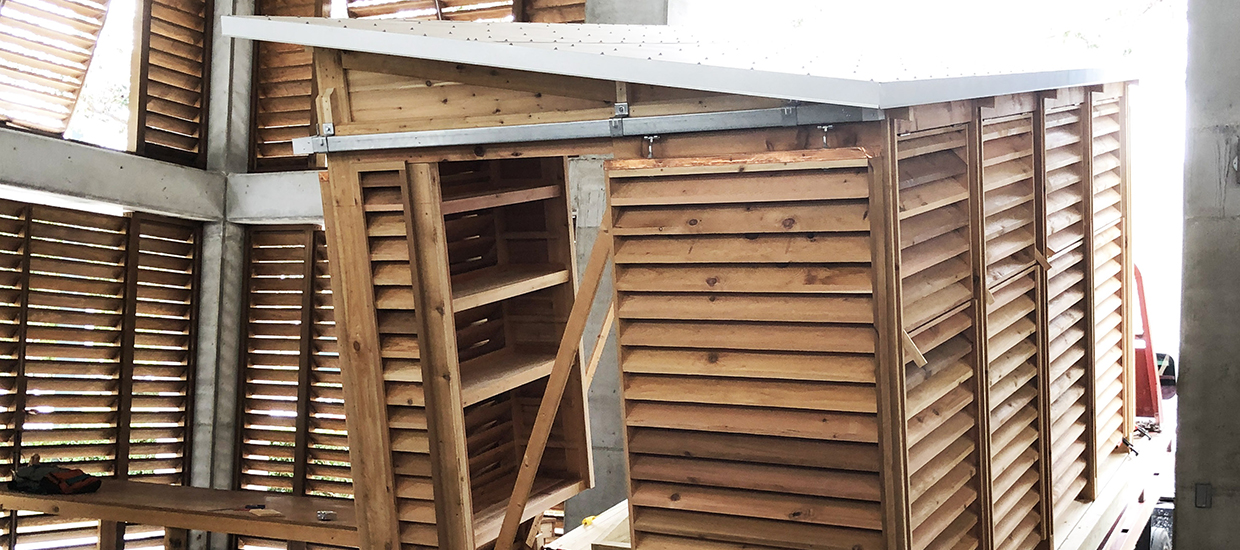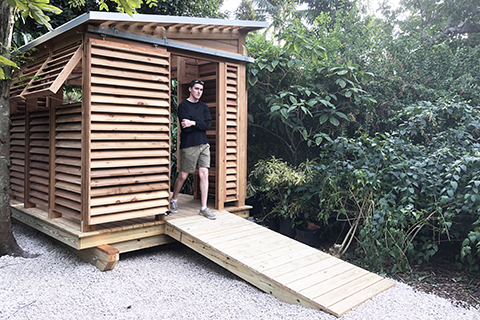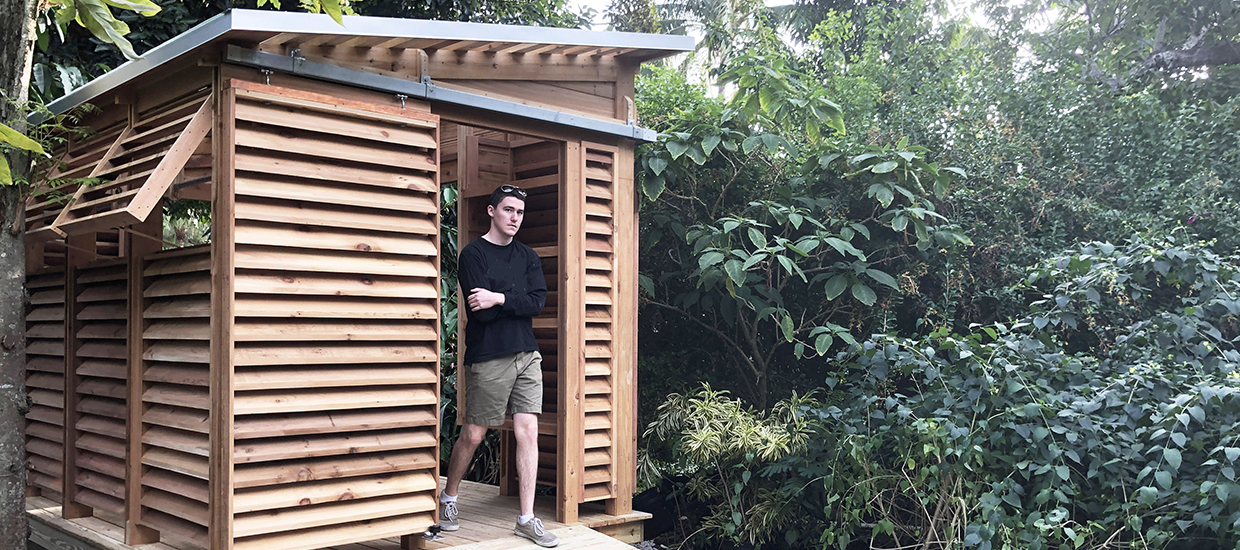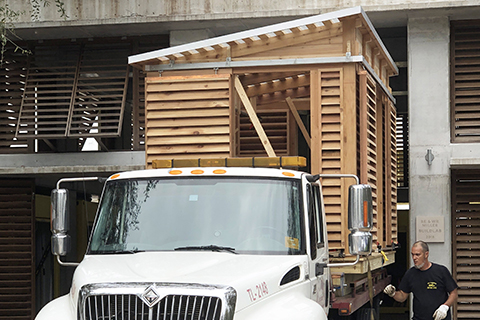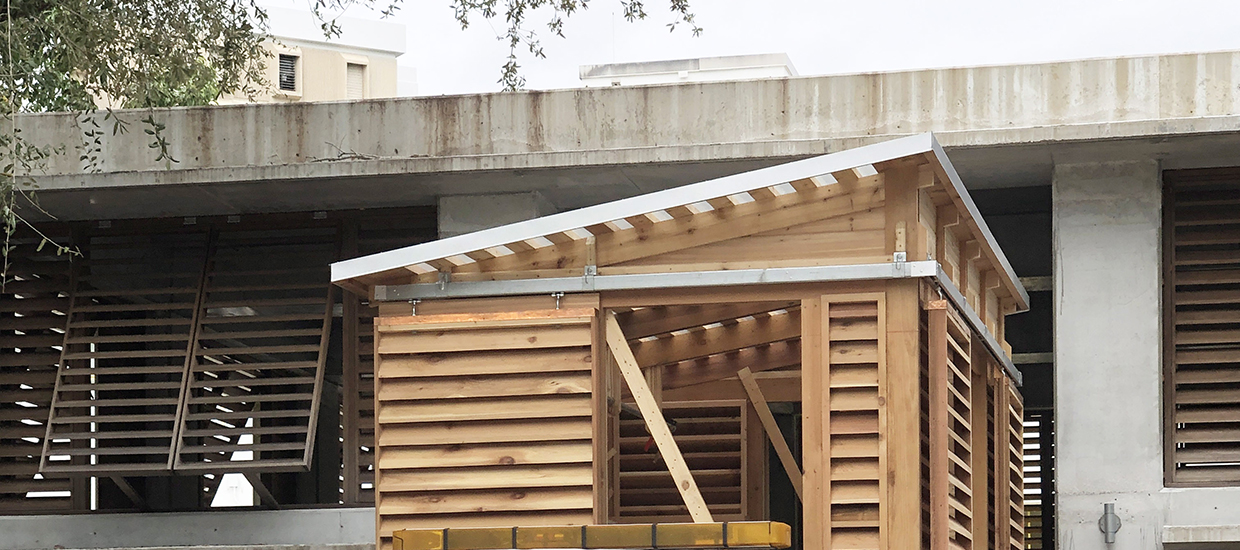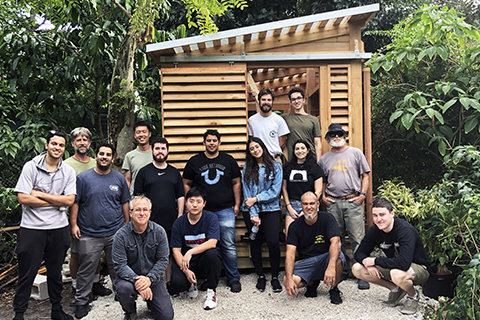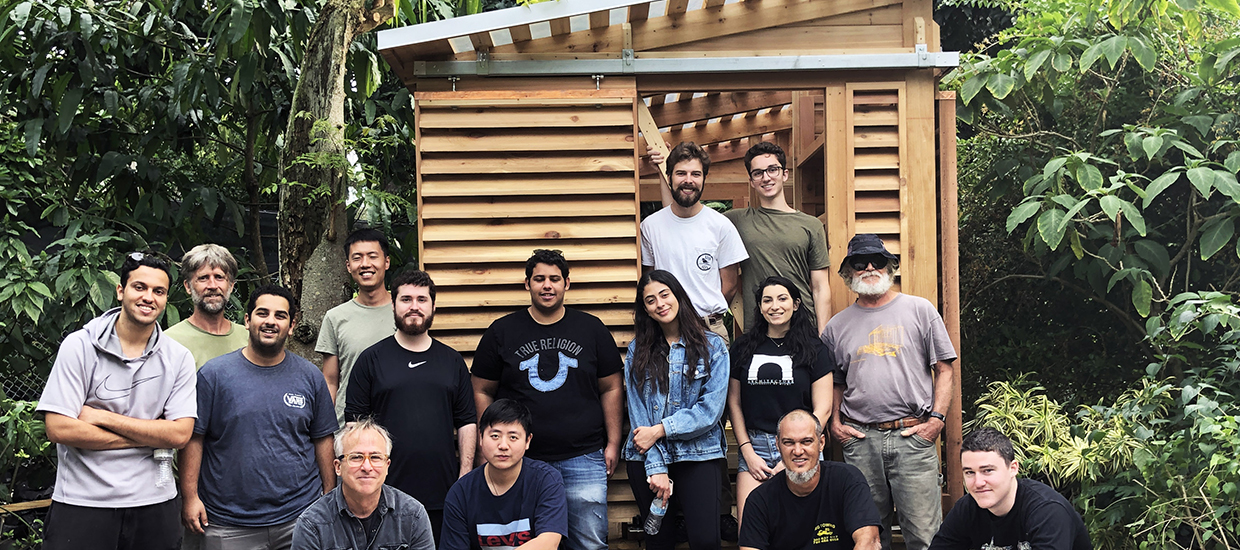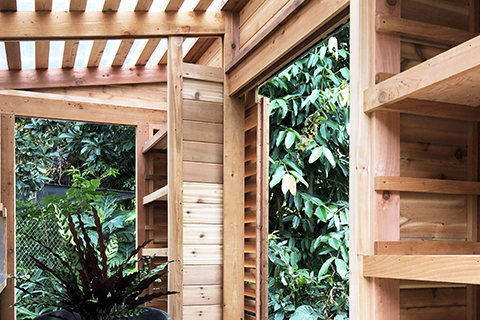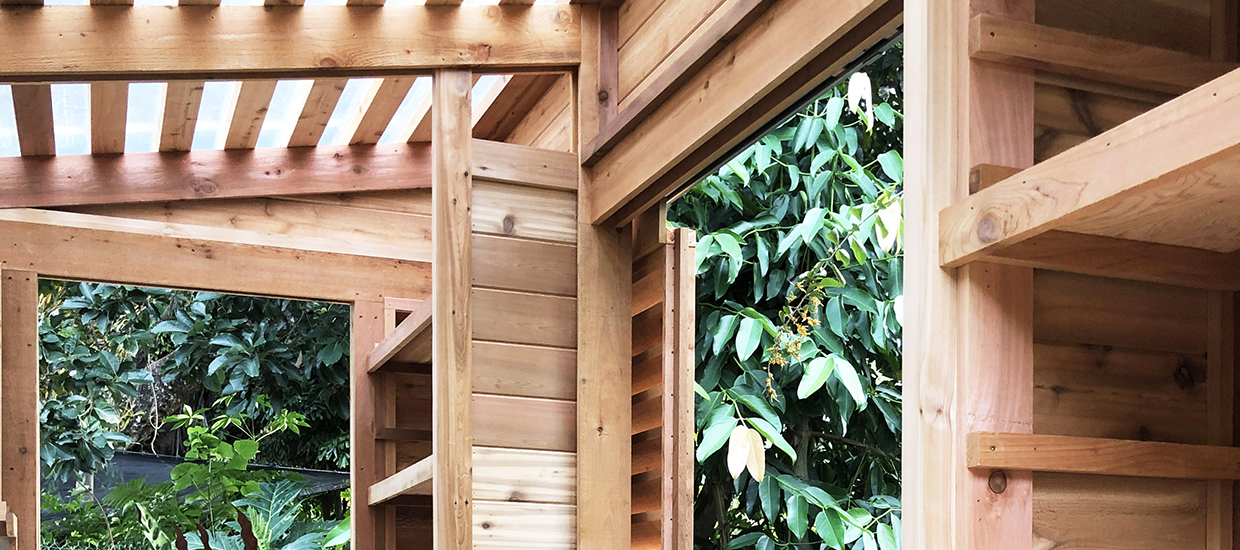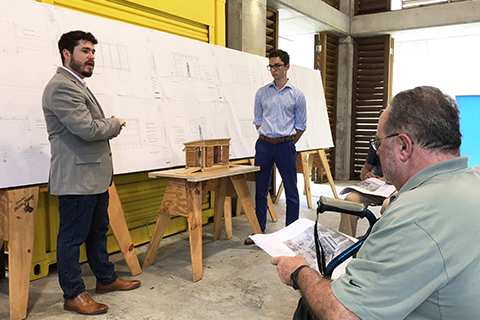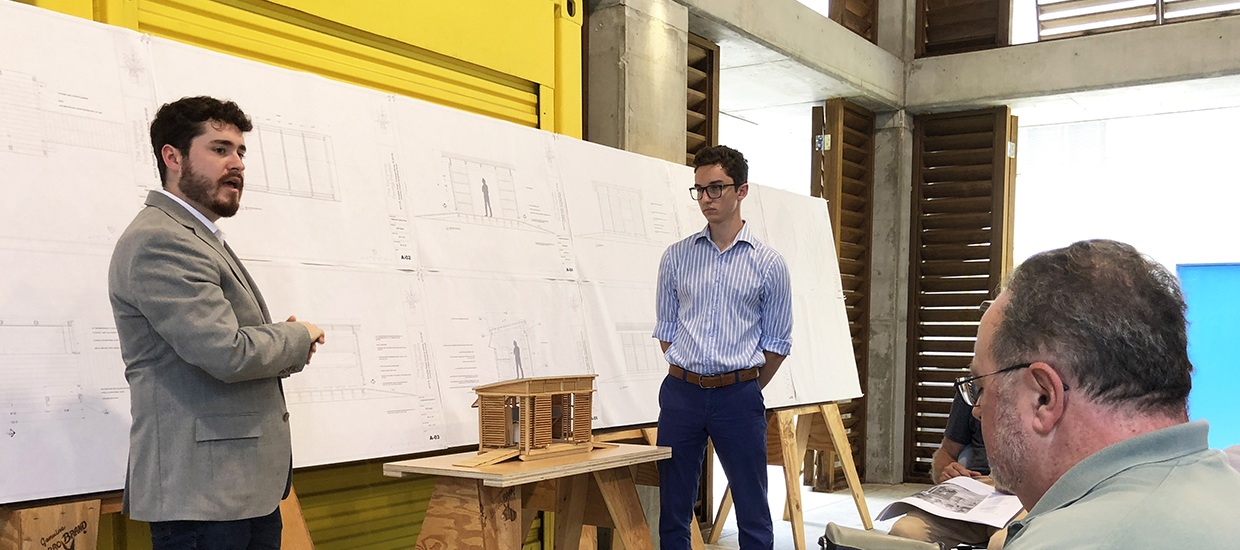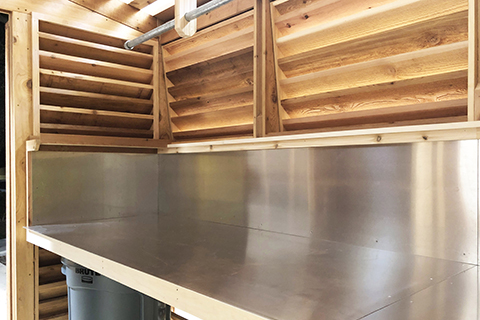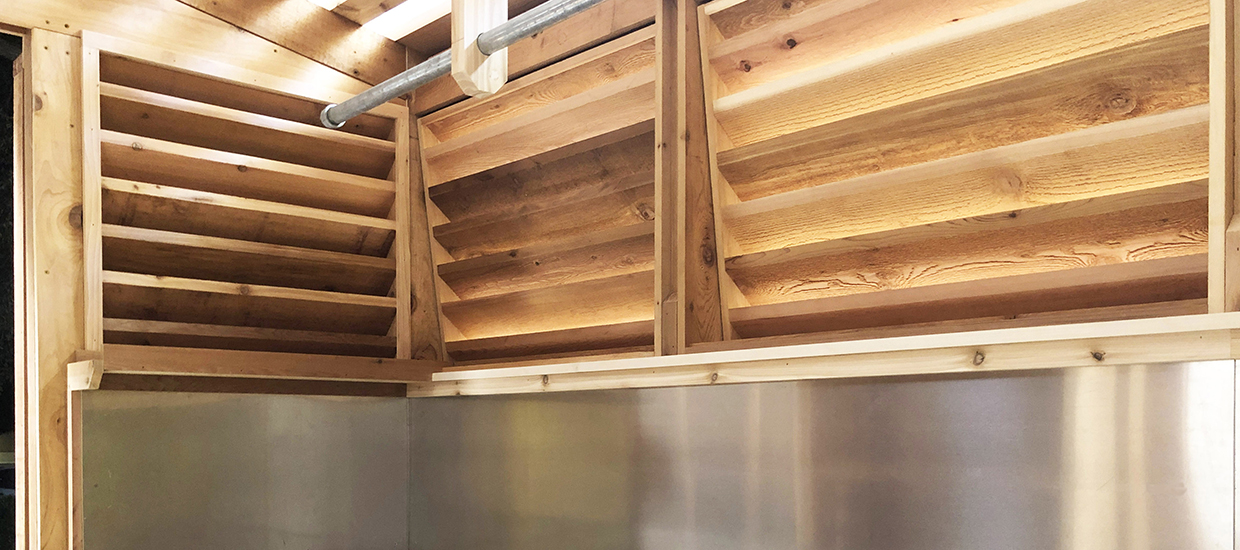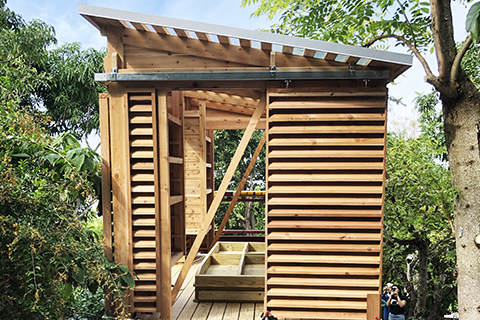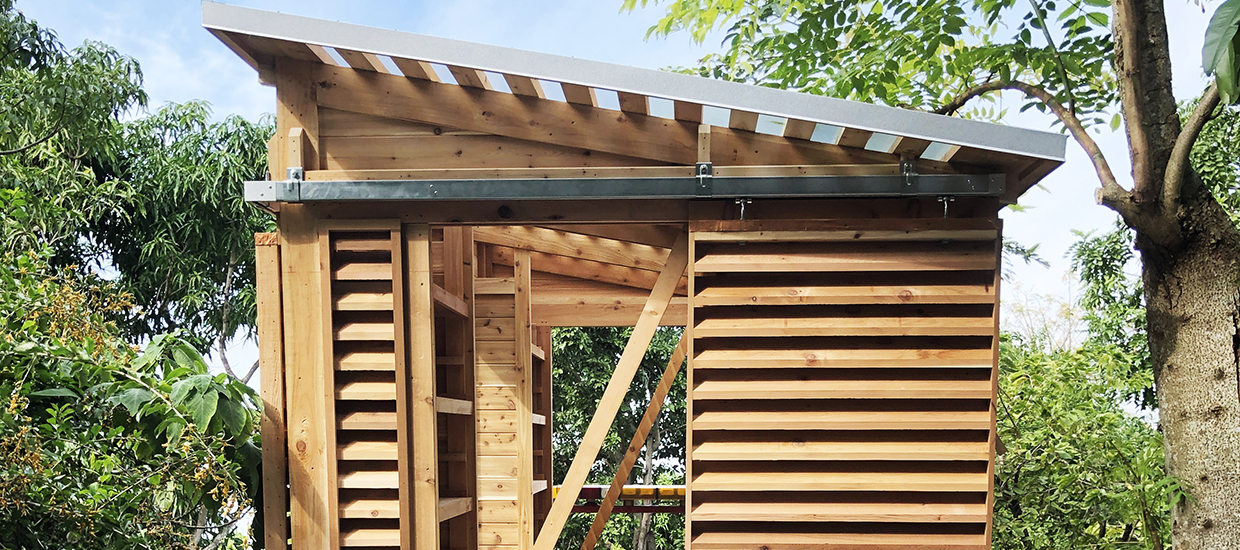David Fairchild began his life’s work, as an organizer of the Office of Foreign Seed and Plant Introduction of the United States Department of Agriculture (USDA ) in the early 1900s.
During his tenure with the USDA, Fairchild introduced approximately 75,000 selected varieties and species of useful plants in the United States between 1906-1928.
As a plant explorer, Fairchild traveled the world in search of useful plants for production in the US. The results of his explorations helped diversify food production in this country while also educating the public on the diverse cultures from which the plants originated. If you have enjoyed Chinese soy beans, persimmons, pistachios, avocados or even Durum wheat you have benefited from the work of David Fairchild’s plant introductions. An important aspect of The Kampong is that it remains a living record of Fairchild’s life work.
With this history in mind, the Design/Build studio began to plan a new Potting Pavilion for 1-2 gardeners to pot or re-pot plants for the garden. This work would be carried on by horticultural staff and garden volunteers to promote The Kampong’s mission of plant preservation, horticultural education and provide tangible expression of the importance of the garden’s historical contribution to the community.
The densely planted 1000’ long site presented two specific challenges. Most immediately, the location of the Potting Pavilion should be selected so that the structure would appear compatible and harmonious within the ‘village’ of existing structures. Second, and most importantly, the Pavilion should be sited and positioned to avoid any deleterious impacts on the root structures of the specimens that populate this unique botanical garden.
The design solution is a narrow, completely louvered structure of western red cedar (WRC) accessed by ramps at either end. The ramps allow one to bring a loaded wheel barrow into the structure and then continue on into the shade-house. Along the interior’s east wall, is the structure’s primary feature, a 13’ long wood-framed work table, solely supported by three walls. The table is of ¾” marine grade plywood surfaced with 1/8” thick aluminum sheets for mixing soil and potting plants. Below the table is space for different potting soils. The soils are kept in six 33-gallon containers resting on rolling dollies. Above, and at either end of the aluminum table, are fixed shelves for hand tools and smaller items. The wall opposite the table supports deeper adjustable shelves, for storage of larger tools and pots.
Some of the structure’s primary design features are its sliding louvered doors, two at either end and one centered on the wall opposite the work table. Sliding along the outside of the structure rather than swinging away from it, the doors minimally impact the dense foliage of the surrounding landscape.
Above the table are four operable louvered panels, that when open, allow for views into the garden and protection from the elements. The roof consists of WRC skip sheathing, spaced to provide 50% shade, covered with translucent fiberglass reinforced plastic that keeps the rain, out, provides shade and soft natural light.
The structure is located along the southeastern edge of the property, just off the entrance drive, on a path to the shade house. Sited in this way, the new potting pavilion participates in the larger village concept by connecting directly to the shade house and research lab beyond. Finally, because the potting pavilion is narrow and small, (built to go down the road), and on a skid foundation, it can be moved to other parts of the garden as needed.
The diminutive scale of the Potting Pavilion contrasts with the 1928 main house by Clarence Dean, which commands the center of the site, crossing the property at its narrowest dimension and along the highest point of the oolitic rock ridge. Acting as a gateway between the upper and lower gardens, the center of the house is an open breezeway enhancing the flow of the southeasterly winds from Biscayne Bay and providing shaded views across the water toward Key Biscayne. While smaller and humbler, the new Potting Pavilion works to accomplish similar goals to Clarence Dean’s design method of enhanced cross ventilation and marking an important path in the day-to-day work of the site. The Potting Pavilion accomplishes its primary purpose - to propagate and preserve the botanical heritage started by David Fairchild for future generations.
Client: The National Tropical Botanical Garden
Students: Ahmed Alnezi, Abdulaziz Alghannam, Saad Alhajri, Sarah Alnoman, Bo Xuan, Andrew Clum, Christopher D’Amico, Jacob Gardner, Frances Gelbert, Nicholas Meury, Junkang Shao, Julia Zollner
Teaching Assistant: Wei Wang, Bo Xuan
Faculty: Jim Adamson, Rocco Ceo



